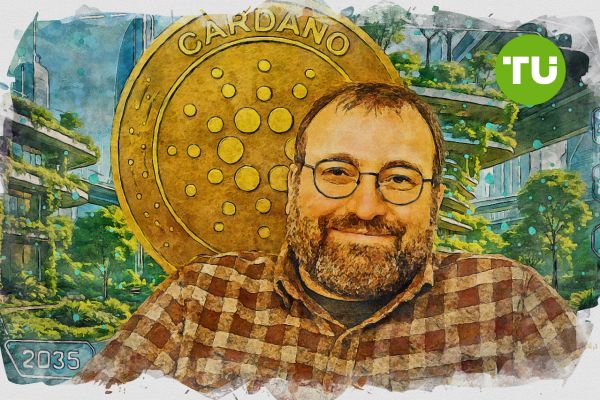Charles Hoskinson reveals plans to integrate Ripple-based assets into Cardano
 Cardano builds support for XRP in DeFi tools
Cardano builds support for XRP in DeFi tools
Charles Hoskinson, the founder of Cardano, announced upcoming plans to integrate Ripple-related digital assets into the Cardano ecosystem, including the key token XRP and the institutional-grade stablecoin RLUSD. This move has the potential to significantly expand the network’s functionality.
The announcement was made in response to a community member’s question about the possible inclusion of RealUSD in Cardano. It sparked a wave of discussion across the crypto community, as many interpreted it as a signal of a potential large-scale partnership between two major blockchain networks, according to CoinGape.
The XRP package and the role of the Lace wallet
According to Hoskinson, a comprehensive XRP-focused package is currently under development. Although no specific timeline has been disclosed, the package is expected to include support for Cardano’s Lace wallet, integration of DeFi tools tailored for XRP, ongoing RealUSD discussions, and a feature called “glacier drops”—presumably referring to a staged token release or phased rollout of features. This suggests that RealUSD is just one component of a broader initiative to bring Ripple-based assets into the Cardano environment.
Loading...
The Lace wallet, which prioritizes ease of use and secure asset management, is also set to support Ripple assets once integration is complete. This will allow users to store and transact with XRP and RLUSD directly within Cardano’s native wallet, significantly improving accessibility and expanding practical use cases across the ecosystem.
DeFi potential for XRP within the Cardano ecosystem
Equally important is the planned inclusion of XRP in Cardano’s decentralized finance sector. Historically, XRP has had limited involvement in the DeFi space, but integrating it into Cardano's smart contracts could unlock new opportunities. Lending, borrowing, and liquidity provision using XRP and RLUSD could draw new users and capital into the network.
Hoskinson’s response reflects Cardano’s broader push for greater interoperability with other networks and strong support for stablecoins, which may help solidify its position in the competitive DeFi landscape. A combination of regulated stablecoins and established tokens like XRP could prove attractive to institutional users and developers looking for scalable blockchain solutions.
Ripple’s stablecoin initiatives and Cardano’s strategic outlook
Meanwhile, Ripple announced the expansion of fiat-backed stablecoins on the XRP Ledger (XRPL), including USDC, RLUSD, EURØP, USDB, and XSGD. With XRP serving as the native asset for fees and liquidity, XRPL continues to evolve as a powerful infrastructure for cross-border payments and tokenized financial products.
These parallel developments point to growing synergy between Ripple and Cardano. By integrating XRP assets and stablecoins into its platform, Cardano aims to diversify its DeFi offerings and appeal to a broader audience. If successful, the network could position itself as a leader in stablecoin-enabled, interoperable Web3 finance.
Notably, Charles Hoskinson has previously praised the XRP project, highlighting its strong leadership, dedicated community, and clear sense of purpose.













































































































































